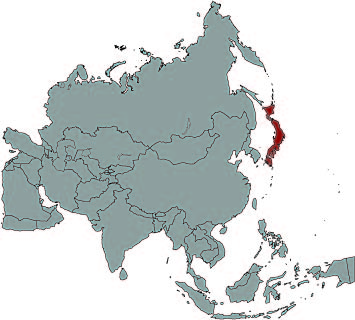

The art of Japan before the Edo Period focused on serene subjects, such as Buddhist monks on the cusp of enlightenment, but the people of Edo Japan wanted pictures of dashing actors and beautiful geishas on their walls in much the same way that we buy posters of our favorite movie stars or rock bands.
One popular form of art that developed was woodblock prints, or ukiyo-e, which means "picture of floating world." Prints were produced through the close collaboration of artist, carver, and printer. The completed objects were beautifully colored prints of actors and courtesans, which were inexpensive and mass produced to bring art to people of all social classes.
Woman Holding a Tray was created several decades after the end of the Edo Period during the Taisho Era, but it still shows the influence of both periods by portraying a beautiful young woman gazing serenely off in the distance. During the Edo Period many people believed enlightenment was reached through beauty and pleasure instead of constant meditation and discipline. Prints of women grew more widely accepted during the Taisho Era, when Japan became more open and liberal.
Goyo Hashiguchi, Japanese (1880-1921)
15 3/4 inches H; 10 1/2 inches W
Purchase from Museum of Art Endowment Fund
2007.003.005
1912 Taisho Democracy begins in Japan.
1919 Prohibition in United States.
1922 Japanese Communist party founded.
1924 "Surrealist Manifesto" published.




